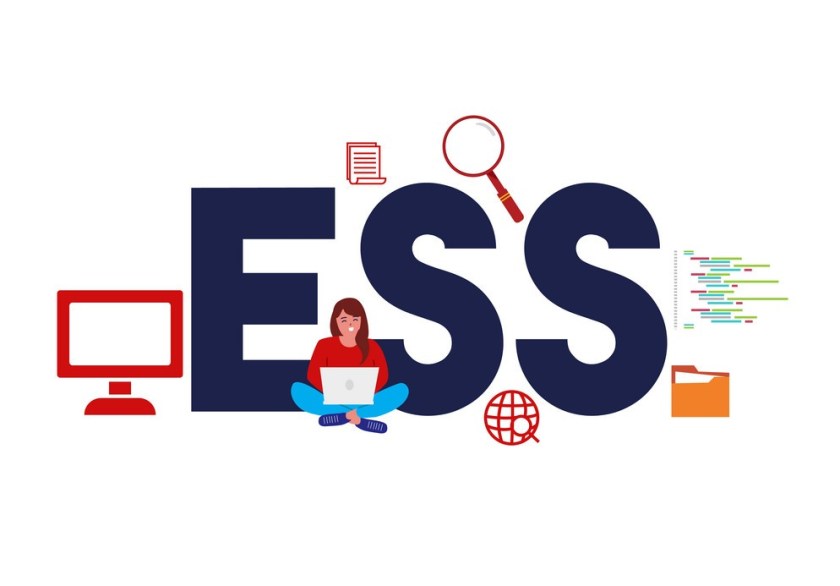The need for efficient, streamlined, and user-friendly Human Resource Management Systems (HRMS) has never been greater. One of the most powerful tools within HRMS is the Employee Self-Service (ESS) portal. An ESS portal empowers employees by providing them with direct access to HR-related tasks and information, leading to increased efficiency, improved data accuracy, and higher employee satisfaction. This comprehensive guide explores the myriad benefits of implementing an HRMS ESS portal, highlighting its positive impact on both employees and organizations.
Increased Efficiency and Productivity
An HRMS ESS portal significantly increases efficiency and productivity within an organization. By enabling employees to manage routine HR tasks independently, such as updating personal information, accessing pay slips, and applying for leave, the administrative burden on HR departments is substantially reduced. This reduction in administrative workload allows HR professionals to focus on more strategic tasks, such as talent management and organizational development.
Enhanced Employee Engagement and Satisfaction
Empowering employees with the ability to manage their HR tasks independently fosters a sense of ownership and responsibility. When employees feel more in control of their work-related activities, their engagement and job satisfaction levels will likely increase. The HRMS ESS portal also provides employees with easy access to important information, such as company policies, benefits, and training opportunities, which enhances transparency and trust within the organization.
Moreover, accessing the ESS portal from any device, including mobile phones, allows employees to stay connected and informed, further boosting their engagement and satisfaction.
Improved Accuracy and Data Management
Manual HR processes are prone to errors, which can lead to discrepancies and inefficiencies. HRMS ESS portals minimize the risk of errors by allowing employees to enter and update their information directly into the system. This self-service approach ensures that data is accurate, up-to-date, and consistent across the organization.
The centralized data management provided by HRMS ESS portals also facilitates better data analysis and reporting. HR professionals can access real-time insights and make informed decisions based on accurate data, enhancing overall organizational effectiveness.
Cost Savings
Implementing an HRMS ESS portal can lead to significant cost savings for organizations. By automating routine HR tasks and reducing the reliance on paper-based processes, companies can lower their administrative costs. Reducing manual errors and the need for rework also contribute to cost savings.
Streamlined HR Processes
HRMS ESS portals streamline HR processes by providing a single platform for employees to manage various HR tasks. This integration simplifies workflows and eliminates the need for multiple systems or manual processes. Employees can access a wide range of HR services, such as time and attendance tracking, performance management, and benefits enrollment, all in one place.
This streamlined approach not only enhances the user experience but also ensures that HR processes are more efficient and consistent across the organization.
Personal Information Management
HRMS ESS portals allow employees to view and update their personal information, such as contact details, emergency contacts, and banking information. This self-service capability ensures that employee data is always accurate and up-to-date, reducing the administrative burden on HR departments.
By maintaining up-to-date personal information, organizations can ensure effective communication with employees, particularly in emergencies. It also allows for accurate payroll processing, benefits administration, and compliance with legal and regulatory requirements.
Leave and Attendance Management
The leave and attendance management feature enables employees to apply for leave, check leave balances, and track attendance records. Managers can easily review and approve leave requests, ensuring that leave policies are consistently applied and adequate workforce coverage.
This feature helps reduce absenteeism and manage leave more effectively, ensuring that employees take their entitled leave while maintaining optimal staffing levels. It also simplifies the process for employees, providing them with a clear understanding of their leave entitlements and balances.
Payroll and Compensation Management
Top hrms provide employees with access to their pay slips, tax documents, and compensation details. This transparency ensures that employees can review their earnings and deductions, enhancing trust and satisfaction. The portal also allows employees to change their tax withholdings and direct deposit information.
By automating payroll processes and providing employees with self-service access to their payroll information, organizations can reduce errors, ensure timely payments, and maintain compliance with tax regulations.
Performance Management
The performance management feature enables employees to set goals, track progress, and receive feedback from managers. This continuous feedback loop fosters a culture of accountability and development, ensuring that employees are aligned with organizational objectives and are working towards their personal and professional growth.
By providing employees with visibility into their performance goals and progress, HRMS ESS portals support ongoing development and improvement. They also facilitate regular performance reviews and feedback sessions, helping employees stay on track and achieve their goals.
Training and Development
HRMS ESS portals offer access to training and development resources, such as online courses, workshops, and certifications. Employees can browse available learning opportunities, register for courses, and track their progress. This feature supports a culture of continuous learning and helps employees acquire new skills and advance their careers.
By providing employees with easy access to training and development resources, organizations can enhance their skills and competencies, support career growth, and improve overall performance.
Communication and Collaboration Tools
HRMS ESS portals often include communication and collaboration tools, such as company announcements, discussion forums, and social feeds. These tools facilitate better communication and collaboration among employees, fostering a sense of community and engagement within the organization.
By providing employees with a platform for communication and collaboration, HRMS ESS portals support a positive organizational culture and enhance employee engagement. They also ensure that important information is communicated effectively and that employees can easily connect with their colleagues.
Enhanced Compliance and Reporting
Compliance with labor laws, regulations, and organizational policies is critical for minimizing legal risks and maintaining a fair and equitable workplace. HRMS ESS portals help organizations stay compliant by automating HR processes, maintaining accurate records, and providing easy access to compliance-related information.
The centralized data management and reporting capabilities of HRMS ESS portals facilitate better data analysis and reporting, enabling HR professionals to monitor compliance, identify trends, and address potential issues proactively. This enhances overall organizational effectiveness and reduces the risk of non-compliance.
Conclusion
An HRMS ESS portal is a powerful tool that can significantly enhance efficiency, productivity, and employee engagement within an organization. By empowering employees to manage their HR tasks independently, organizations can streamline HR processes, reduce administrative burdens, and foster a culture of ownership and accountability.





